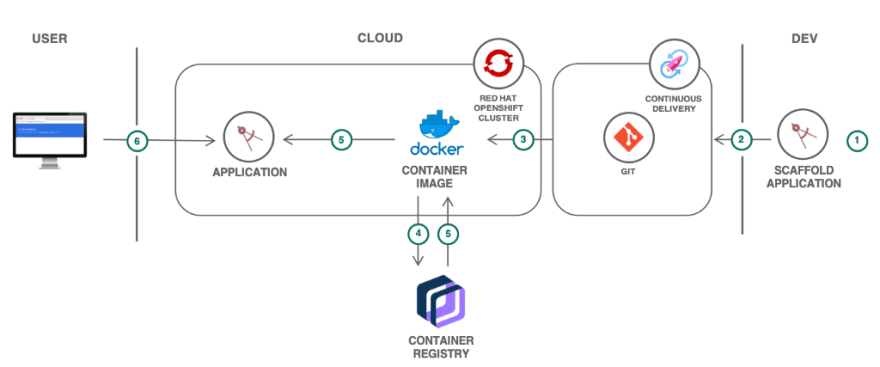Build a Container Image from Source-Code using S2I and Push It to a PrivateRegistry

Vidyasagar SC Machupalli
Posted on April 14, 2020
Build a Container Image from Source-Code using S2I and Push It to a Private Registry
Explore the capabilities of a tool called S2I (Source-to-Image).
Recently, while drafting an OpenShift solution tutorial, I explored an interesting tool called S2I (Source-to-Image). In this post, you will learn how to create a container image directly from your source code and push the generated container image to a private IBM Cloud Container registry.
What is S2I (Source-to-Image)?
S2I is a tool for building reproducible, Docker-formatted container images. It produces ready-to-run images by injecting application source into a container image and assembling a new image. The new image incorporates the base image (the builder) and built source and is ready to use with the docker runcommand. S2I supports incremental builds, which re-use previously downloaded dependencies, previously built artifacts, etc.
Installation and setup
Let’s start by installing S2I on your machine.
You can install the s2i binary using go get, which will download the source-to-image code into your $GOPATH, build the s2i binary, and install it into your $GOPATH/bin:
$ go get github.com/openshift/source-to-image/cmd/s2i
For Mac, You can either follow the installation instructions for Linux (and use the darwin-amd64 link) or you can just install source-to-image with Homebrew:
$ brew install source-to-image
Follow the instructions here to install on other operating systems.
To confirm the installation, run the below command on a terminal or command prompt:
Follow the instructions mentioned in the link here to set up the IBM Cloud Container Registry CLI and your registry namespace.
Once created, open the terminal and export the MYNAMESPACE environment variable pointing to your Registry namespace:
Let’s build
The s2i build command provides two options to generate a new container image:
Build a Docker image from a remote Git repository:
$ s2i build [https://github.com/IBM-Cloud/get-started-node](https://github.com/IBM-Cloud/get-started-node) nodeshift/centos7-s2i-nodejs:latest us.icr.io/$MYNAMESPACE/webapp
Build from a local directory. If this directory is a git repo, the current commit will be built:
Clone the get-started-node Git repo and run the below command
$ s2i build . nodeshift/centos7-s2i-nodejs:latest us.icr.io/$MYNAMESPACE/webapplocal
Even before building an image, you can see the generated Dockerfile by appending --as-dockerfile Dockerfile to your build commands.
Once generated, check the contents of the generated Dockerfile:
To understand the S2I requirements and the artifacts of the generated Dockerfile, see the documentation.
Run the app locally and push it to private registry
Check the generated Docker image by running it locally with the following command:
$ docker run -p 3000:3000 -it us.icr.io/$MYNAMESPACE/webapp
Launch a browser and point to http://localhost3000 to see the app running locally:
Push the container image to the private IBM Cloud Container Registry. Don’t forget to log into the container registry with ibmcloud cr login command:
$ docker push us.icr.io/$MYNAMESPACE/webapp
You can check the container image by running the following command:
$ ibmcloud cr images
What’s next?
- Follow the steps mentioned in the solution tutorial to deploy the generated container image as a new app on OpenShift. Also, learn to create a scalable web application on OpenShift in this solution tutorial.
Originally published at https://www.ibm.com on September 12, 2019.

Posted on April 14, 2020
Join Our Newsletter. No Spam, Only the good stuff.
Sign up to receive the latest update from our blog.
Related
April 14, 2020

